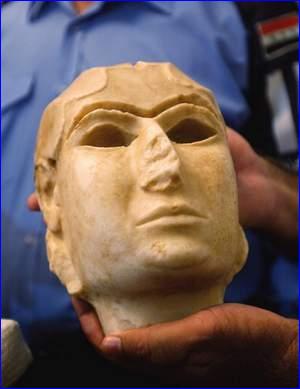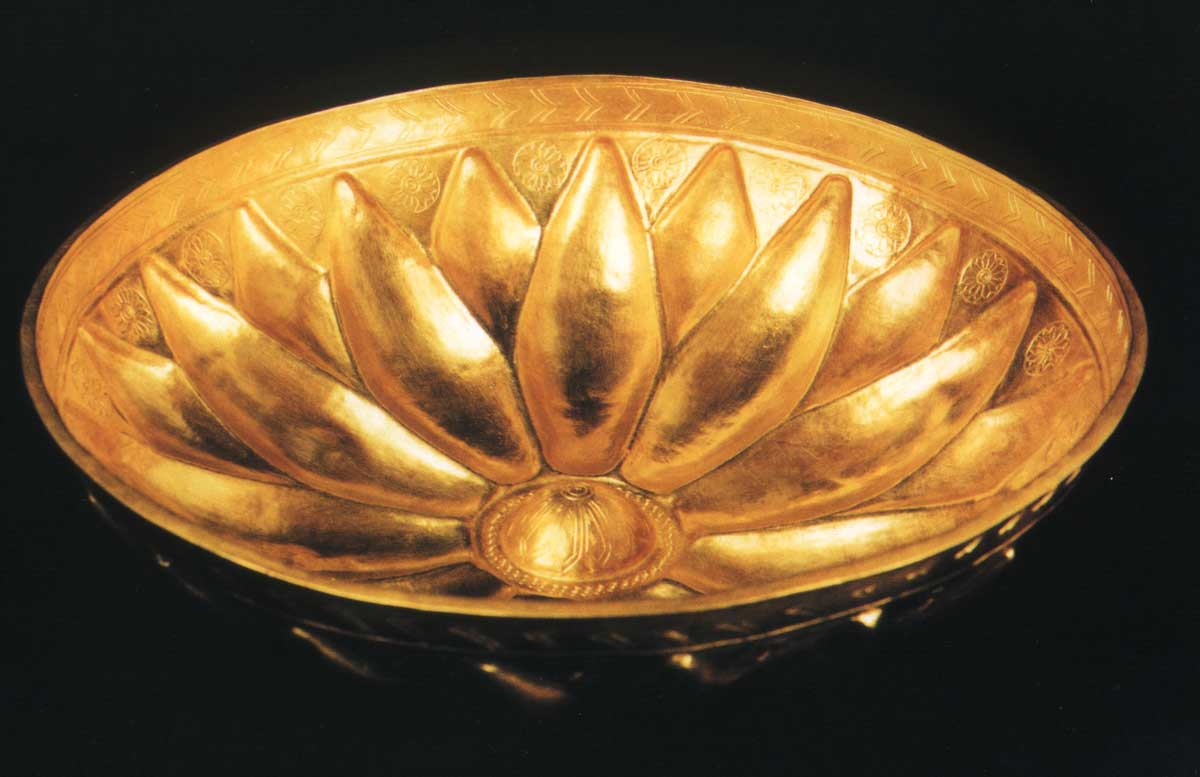


A new team of unlikely allies pressed deep into the dark recesses. The temperature, already in triple digits, increased with every step. The stench of stagnant sewer water was almost unbearable.
After the painstaking process of cutting locks, the massive vault was opened to reveal the Treasure of Nimrud -- 613 pieces of Assyrian gold jewelry, precious stones and sculptures that has been called history's third-greatest treasure after King Tut's tomb and the Bactrian Hoard treasure of Afghanistan.
By now, you've probably heard of George Clooney's new film "The Monuments Men," which is based on the true story of World War II troops who rescued art from the war zone. Well, this isn't their story. This is the story of a modern-day group with a similar mission.
These "monuments men and women" fought to preserve Iraq's past while fellow soldiers fought for the country's future.
Included in their ranks was Maj. Corine Wegener. The now-retired Army Reserve civil affairs officer was a curator at the Minneapolis Institute of Arts when she volunteered to deploy to help support the National Museum of Iraq. Her expedited orders carried the signature of three generals, and she was on scene in May 2003, weeks after massive looting subsided in Baghdad. As many as 15,000 artifacts were lost in the mayhem.
"This is the cradle of civilization. The collections in the museum represent the finest aspirations of humankind in ancient Mesopo-tamia," she said. "A lot of the objects that were taken from the museum were in my Art History 101 textbooks. It was so important to me to help recover those objects and get the museum back up and stable."
Wegener was met by a "traumatized" museum staff. Shattered artifacts littered the floor. File cabinets and computers that kept all records had been stolen. It seemed like the end of an already troubled history for the international museum.
The Treasure of Nimrud was its crown jewel. This 2,800-year-old treasure, discovered in 1988, was placed in the national bank before the first Gulf War. But its fate was a mystery. Besides explosions from within and without, and the looters and floods, there stood another antagonist: Saddam Hussein's son Qusay, who had stolen billions from the bank and was reported to be after the treasure. "When they opened those boxes, their morale improved 100 percent," Wegener said. "It was a much-needed boost for the National Museum, and the nation."

'Mona Lisa of Mesopotamia'
Reclaiming priceless artifacts is not always as glamorous as movies make it out to be.
One example is the recovery of the Lady of Warka. Known as the "Mona Lisa of Mesopotamia," this priceless 5,200-year-old sculpture is the earliest known representation of the female face. It had been stolen from the National Museum, and the curators turned to Wegener for help. She educated coalition forces, enlisted the help of military police and put up "wanted" posters throughout Baghdad.
The Army's 812th Military Police Company tracked the sculpture through underground art dealers and found it buried in a backyard. Capt. Vance Kuhner called her with the news.
"I take it this thing is pretty important?" the captain asked her.
"Uh, yeah," she replied.
"Then I'd better tell the guys to stop tossing it around," he said. After a few moments of stunned silence, the captain eased her anxiety. "Ma'am, I'm just kidding. It's locked away in the unit safe and we'll bring it to you tomorrow."
In another find, soldiers from Mobile Exploitation Team Alpha were looking for weapons of mass destruction days after coalition forces took control of Baghdad. What they found was the Iraqi Jewish Archive -- thousands of Jewish communal and religious books and documents that had been confiscated from synagogues. They were in the basement of Saddam Hussein's intelligence building, which was filled with four feet of water.
Wegener worked for three months to salvage the documents from water and mold damage, an effort aided by experts from the National Archives. She served as a courier when the documents were brought to a freeze-drying facility in Dallas and later to the National Archives. The collection has been restored and is on view in New York at the Museum of Jewish Heritage until May. It is scheduled to be returned to Iraq this year.
Wegener now serves as a preservation specialist for cultural heritage at the Smithsonian Institution, and has formed the U.S. Committee of the Blue Shield. Called the cultural equivalent of the Red Cross, the agency provides emergency response when cultural property is jeopardized by armed conflict or natural disaster. The culture mission
While similar exploits in World War II earned a place in history and Hollywood, modern monuments men and women are not as widely known.
Lt. Col. James Ahern was senior observer-controller for civil affairs at the Joint Readiness Training Center in Fort Polk, La. After 12 mission rehearsal exercises, it was evident the jobs assigned to civil affairs in Iraq were not what soldiers were trained to do in the U.S. This was not lost on Army leadership, which was looking to reconfigure the capability.
Ahern in 2007 was sent to Combined Joint Special Operations Task Force in Balad to get a firsthand look so trainers could adjust accordingly. But the State Department snatched him up soon after arriving. They had the lead in stability operations but didn't have the people for the job -- especially people with expertise in cultural heritage preservation and graduate degrees in history and library information science with archive specialization.
Ahern was assigned to a Provincial Reconstruction Team embedded in 1st Battalion, 9th Marine Regiment, out of Ramadi. There, he joined an effort to identify lost books and artifacts, develop a working inventory and help design a new public library.
Ahern had to first defuse a cultural clash. The person in charge of the library was a Sunni woman, who was requesting assistance from a Shiite-led government. To say that she was getting resistance would put it mildly.
The team bridged the gap. They also obtained "democracy funds" to purchase books. They helped salvage history that would have otherwise been lost.
This mission is not new. In fact, it helped propel the Army Reserve from a singular medical mission. This was solidified by the 1954 Hague Convention, which requires all who sign the treaty to provide military specialists who protect cultural property.
In fact, the authors were looking at the Monuments Men of World War II when that rule was penned.
Still, the recent wars have proved many military leaders do not know they are supposed to -- or how to -- conduct such cultural missions.
"The capability that exists only in the Army Reserve was utilized by them, but largely through serendipity," Ahern said. "There was no request for forces. I just happened to be there."
The Army is giving civil affairs concerted consideration, especially in light of regional alignment and the push to ensure soldiers are culturally aware of the lands in which they may serve.
It is possible that soldiers will be trained to identify and mark culturally significant items and locations. Such sites may even be identified on electronic battlefield maps. But the bulk of the responsibility will fall to Army Reserve civil affairs companies attached to brigade combat teams.
"Like other 'citizen soldiers' in the Army Reserve, we work in our field in the civilian sector," Ahern said. "Our job in uniform is our passion in life. So to be able to help at this level, in this way, there really aren't words to describe how that feels."

or register to post a comment.